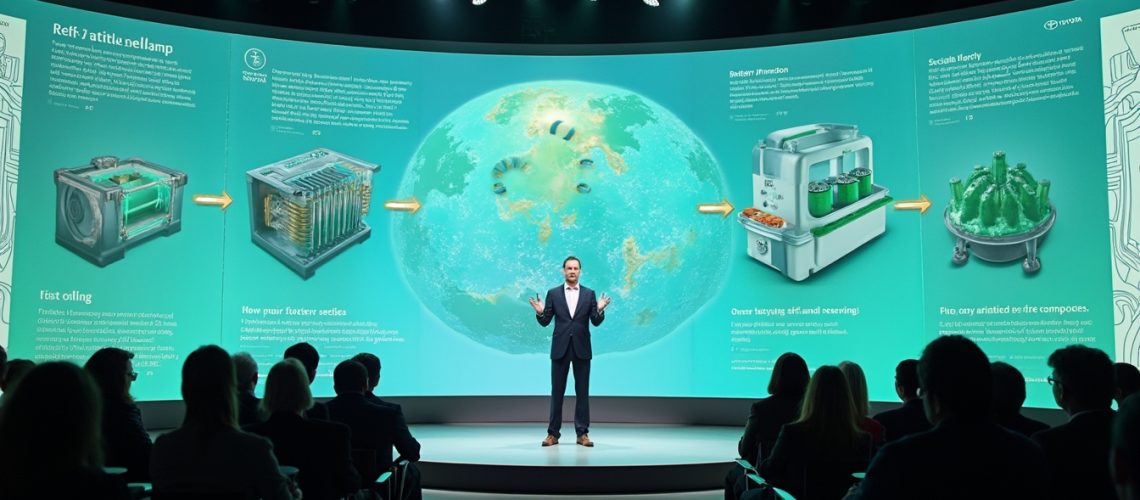Toyota's Innovative Battery Recycling Technology: A Sustainable Solution for Electric Vehicles
The global electric vehicle (EV) revolution is gaining traction, as sales are expected to surge by 35% year-on-year between 2023 and 2025. This growth spurt demands sustainable solutions, raising concerns over the availability of rare metals like lithium and cobalt essential for battery production. As the demand for these crucial materials continues to outpace supply, innovative recycling technologies become paramount.
The urgency of the situation is highlighted by startling data: global lithium reserves are set to quadruple in demand by 2030, while cobalt remains limited to 7.6 million metric tons. Consequently, the European Union has imposed a 70% rare metal recovery requirement by 2031, aiming to secure a circular economy. It's crucial to address critical mineral shortages to ensure the global clean energy transition stays on course.
The International Energy Agency cautions that "the scarcity of cobalt and lithium necessitates circular solutions," underlining the indispensable role of recycling methods in sustainable mobility. By leveraging technology to recycle these materials, countries can mitigate resource shortages and enhance self-sufficiency.
How Does Toyota's New Recycling Process Work?
Toyota is at the forefront of this endeavor with its groundbreaking battery recycling technology, a cornerstone in the quest for sustainability. This process marks a significant advancement in materials recovery, setting new industry standards for efficiency and sustainability.
- Electrolyte Extraction: The process begins with precise electrolyte recovery, achieving an impressive 98% efficiency compared to traditional methods. Cryogenic crushing is employed to reduce oxidation risks during battery breakdown, preserving valuable materials.
- High-tech Separation: The system incorporates state-of-the-art sorting powered by AI, ensuring a remarkable 99% purity in the recovered material streams. This purity enables the seamless reintegration of materials into new battery production.
Key stages include:
- Sophisticated electrolyte distillation
- Advanced cell crushing with AI-powered sorting
- Precision material separation techniques
Such innovations highlight revolutionizing lithium production and ensuring that critical components can be efficiently reused, fulfilling circular economy principles.
The Technological Edge of Toyota's Recycling Method
Toyota's recycling approach delivers substantial benefits in terms of environmental impact and operational efficiency. The method cuts CO2 emissions by 50% compared to conventional smelting-based processes and reduces processing time by 30%.
- Environmental Impact: Proprietary solvents significantly decrease electrolyte contamination risks, marking a breakthrough in battery recycling safety and efficiency. The Circular Economy Institute suggests that such closed-loop systems can reduce virgin material usage by up to 80%.
- Economic Benefits: Initial capital outlay for these advanced recycling facilities is significant—around $120 million per location. Nevertheless, Toyota anticipates a promising return on investment by 2030, aligning with their broader sustainability objectives. The Australian mining sector will likely benefit from such sustainable practices, enhancing both economic viability and environmental stewardship.
What Can Be Recovered?
The comprehensive recycling process recovers a variety of essential materials from batteries:
- Black Mass Composition: Typically includes 12-15% lithium, 5-8% cobalt, and 20-25% nickel.
- Direct Cathode Regeneration: Enables immediate reuse of high-purity materials in new battery production, significantly advancing the concept of a truly circular manufacturing economy.
Toyota's Global Recycling Strategy
Toyota's global strategy hinges on strategic partnerships. Collaborations with Cirba Solutions, Redwood Materials, and CATL underscore a robust international approach with a targeted recycling capacity of up to 50,000 tons annually by 2026.
The company's substantial $200 million investment, planned between 2024 and 2027, highlights its dedication to promoting sustainable mobility solutions and addressing core challenges within the green hydrogen revolution and energy transition.
Economic and Sustainability Considerations
Toyota’s holistic sustainability vision aligns advanced recycling methodologies with broader economic strategies. For instance, the KINTO mobility service demonstrates potential emissions reductions of up to 25% over the vehicle lifecycle through these integrated recycling strategies.
This innovation isn't just about environmental compliance but also represents a substantial economic shift, as the battery recycling sector is poised to expand to $45 billion by 2030. This growth, with a robust 22% compound annual growth rate, positions Toyota's methods at the forefront of this transformative industry shift.
Future Implications for the Industry
The implications of Toyota's innovations are profound. They offer a beacon for manufacturers worldwide aiming to achieve carbon neutrality and support a sustainable electric mobility ecosystem. Toyota’s advancements provide a model for addressing core challenges such as material scarcity and environmental impact while promoting a sustainable economic framework.
By pioneering these developments, Toyota not only tackles significant industry challenges but also redefines the landscape of battery recycling. The resulting technological progress promises to reshape how we envision the role of graphite, lithium, and other critical materials in future energy solutions.
In conclusion, Toyota's battery recycling technology sets a compelling example for sustainable electric vehicle production and demonstrates a pivotal move toward addressing the pressing issues of resource scarcity, environmental responsibility, and sustainable manufacturing practices.
Ready to Stay Ahead in the Electric Vehicle and Critical Minerals Market?
Discover the latest insights and opportunities in critical minerals with Discovery Alert's real-time AI-powered notifications, designed to simplify complex market data and help investors navigate the rapidly evolving landscape of electric vehicle technologies and mineral discoveries. Whether you're a seasoned investor or new to the sector, our 30-day free trial provides comprehensive alerts on breakthrough technologies, market trends, and potential investment opportunities in critical minerals and emerging technologies.







